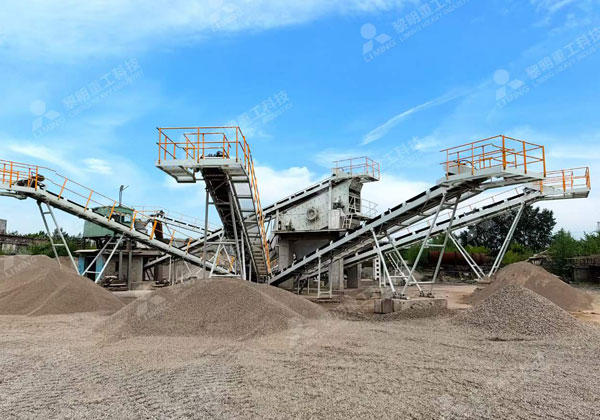In the modern construction and industrial sectors, materials efficiency and sustainability have become top priorities. One such material that exemplifies this trend is aggregate crushing fine powder—a byproduct of crushing rocks such as granite, limestone, basalt, or other aggregates. Once considered a waste material, this fine powder is now widely utilized across various industries for its beneficial properties.
What is Aggregate Crushing Fine Powder?
Aggregate crushing fine powder consists of very small particles produced when larger stones and rocks are crushed in crushers. These particles typically have a size smaller than 4.75 mm (passing through a 4.75 mm sieve). The powder is finer than typical aggregate sizes but coarser than sand. Its composition depends on the parent rock but generally contains fine mineral particles with angular shapes and rough surfaces.

Uses of Aggregate Crushing Fine Powder
1. As a Partial Replacement for Sand in Concrete and Mortar
The fine powder can be used to replace a portion of natural sand in concrete and mortar mixes. This replacement helps:
-
Reduce demand for natural sand, preserving riverbeds and ecosystems.
-
Improve the workability and cohesiveness of concrete.
-
Lower material costs since the powder is often less expensive or free.
Studies have shown that replacing 10–20% of sand with crushing fine powder can enhance concrete’s compressive strength and reduce bleeding and segregation.
2. Filler Material in Asphalt Pavements
Fine powder is used as filler in hot mix asphalt (HMA) or bituminous concrete. Its angular particles help:
-
Improve the density and stability of asphalt mixtures.
-
Reduce voids and improve interlocking between aggregate particles.
-
Enhance the durability and resistance to rutting and cracking.
3. Base and Subbase Stabilization
In road construction, the fine powder can be mixed with coarse aggregates to form stabilized base and subbase layers. This mix provides:
-
Better compaction and interlocking.
-
Improved load distribution.
-
Reduced permeability, increasing durability.
4. Manufacture of Bricks and Blocks
Crusher dust is sometimes added to clay or cementitious mixes used for making bricks and blocks. Benefits include:
-
Reduced shrinkage and cracking during drying.
-
Increased strength and durability of bricks.
-
Improved surface finish and texture.
5. Soil Stabilization and Improvement
When added to weak or expansive soils, aggregate fine powder can:
-
Enhance soil bearing capacity.
-
Reduce plasticity and shrink-swell behavior.
-
Improve drainage properties.
Considerations and Challenges
While the use of aggregate crushing fine powder offers many benefits, some considerations include:
-
Quality Control: The powder must be free from harmful impurities like clay, silt, or organic matter which can weaken concrete or asphalt.
-
Particle Size Distribution: Proper grading is necessary to achieve desired mechanical properties.
-
Moisture Content: High moisture can affect mixing and compaction.
-
Standards Compliance: Local standards may limit the amount of crusher dust in mixes.
Aggregate crushing fine powder is no longer just a waste byproduct; it plays a valuable role in construction and engineering applications. When used judiciously, it can reduce costs, improve material performance, and contribute to sustainable construction practices by minimizing natural resource consumption. Proper assessment and quality control ensure that its use is both efficient and safe for long-term structural integrity.

